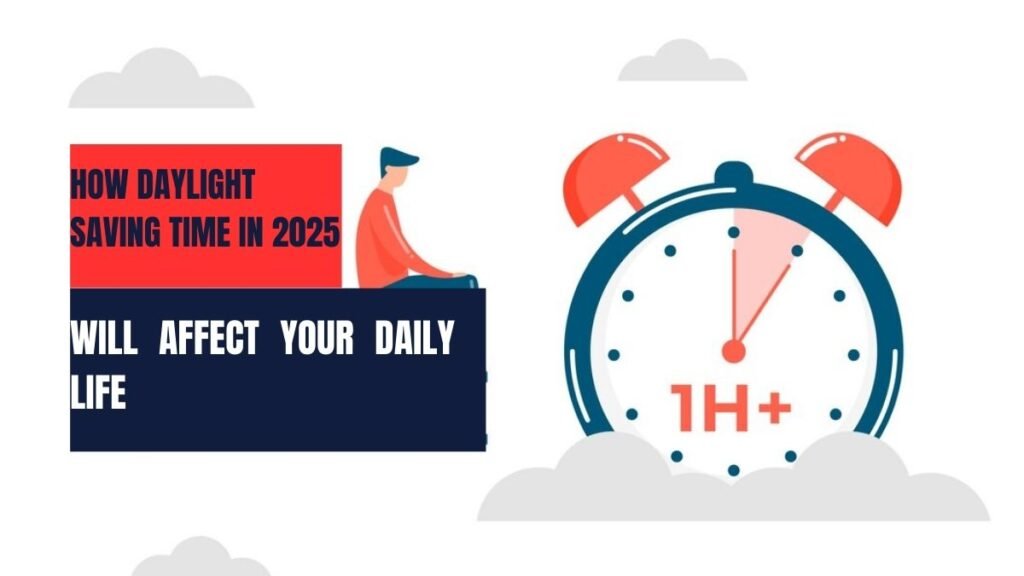Daylight Saving Time (DST) is a practice that many countries use to make the most of daylight during the warmer months. This system involves changing the clocks, usually by moving them forward by one hour in the spring and moving them back in the fall. For 2025, DST will start on March 9 and end on November 2. In this article, we’ll cover everything you need to know about Daylight Saving Time in 2025, including its benefits, drawbacks, and how you can prepare for the time change.
What is Daylight Saving Time?
Daylight Saving Time is a system where the clocks are moved forward by one hour during the warmer months, usually in spring and summer. The main purpose of DST is to help people make better use of daylight, especially in the evening. This practice is thought to help save energy by reducing the need for artificial lighting during evening hours.
The idea behind DST is simple: By shifting the clock, we can make better use of natural daylight. For example, if the sun sets later in the evening, people can spend more time outdoors after work or school, and businesses can take advantage of the extra daylight for longer operating hours.
When Does Daylight Saving Time Start and End in 2025?
In 2025, Daylight Saving Time in the United States and many other countries will begin on Sunday, March 9, at 2:00 A.M. This is when clocks will “spring forward” by one hour. DST will end on Sunday, November 2, at 2:00 A.M., when clocks will “fall back” by one hour.
Key Dates for Daylight Saving Time in 2025:
- DST Begins: March 9, 2025, at 2:00 A.M.
- DST Ends: November 2, 2025, at 2:00 A.M.
This system is used in many parts of the world, but not all countries follow DST. Some countries, like India, do not change their clocks at all throughout the year.
How Does Daylight Saving Time Affect Different Countries?
While Daylight Saving Time is observed in many parts of the world, not every country follows this system. Here’s a breakdown of how DST affects different regions:
North America:
- United States: Most states will follow DST in 2025, starting on March 9 and ending on November 2. However, Hawaii and Arizona (except for the Navajo Nation) do not observe DST.
- Canada: Most provinces follow the same DST schedule as the U.S., except for Saskatchewan, which does not observe DST.
Europe:
- European Union: Daylight Saving Time starts on March 30, 2025, and ends on October 26, 2025.
Oceania:
- Australia: In regions like New South Wales, Victoria, South Australia, Tasmania, and the Australian Capital Territory, DST begins on the first Sunday in October and ends on the first Saturday in April.
- New Zealand: DST is observed from the last Sunday in September to the first Sunday in April.
India and Other Countries:
- India: India does not observe DST. The time in India stays the same year-round.
- Japan and China: While both countries have tried DST in the past, they no longer follow it.
Benefits and Drawbacks of Daylight Saving Time
There are several pros and cons to Daylight Saving Time. Let’s take a closer look at both sides:
Pros:
- Energy Savings: One of the main reasons DST was introduced was to save energy. With longer daylight hours in the evening, people can use less electricity for lighting.
- More Daylight for Activities: Longer evenings mean more time for outdoor activities. People can go shopping, exercise, or enjoy hobbies after work or school.
- Economic Boost: Businesses that rely on daylight, like retail stores or tourism, can benefit from the extended daylight hours.
Cons:
- Health Effects: Moving the clock forward or backward can disrupt your body’s natural circadian rhythm. This can lead to sleep disturbances and affect your mood.
- Sleep Issues: Some people may have trouble adjusting to the time change, leading to sleep problems. Losing an hour of sleep in the spring can be especially challenging.
- Increased Risk of Accidents: Studies show that the risk of car accidents and heart attacks can increase in the days after the time change, as people’s sleep schedules are disrupted.
How to Prepare for Daylight Saving Time
If you want to make the transition to DST easier, here are some tips:
- Gradually Adjust Your Sleep Schedule: About a week before the time change, start going to bed 15-20 minutes earlier each night. This will help your body get used to the new time.
- Stick to Your Routine: Try to keep your regular schedule for meals, exercise, and activities. This will help your body adjust more easily.
- Get Natural Light: Spend time outdoors in the morning to help reset your internal clock.
- Avoid Caffeine and Alcohol: Both caffeine and alcohol can interfere with your sleep quality, so try to avoid them in the evening before the time change.
Daylight Saving Time is an important part of life in many countries, helping to save energy and provide longer daylight hours in the summer. However, it can also cause disruptions to our sleep and health. While countries like India don’t follow DST, it’s important to remember the time differences when communicating or doing business internationally. Understanding how DST works and how to prepare for it can help make the transition smoother.

